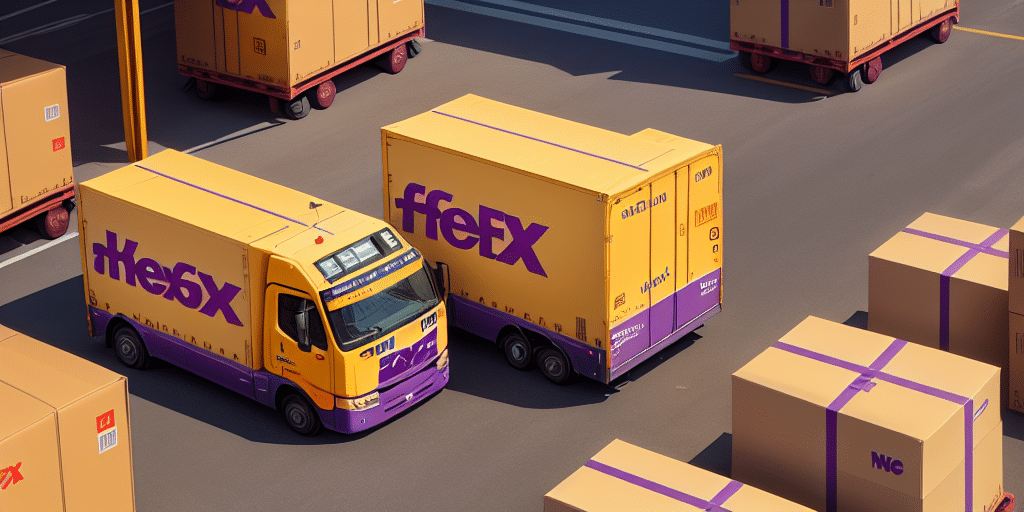If you're involved in the shipping industry, you've probably come across the term "freight class" at some point. But what exactly is a freight class, and why does it matter for shipping? In this comprehensive guide, we'll explain everything you need to know about calculating your FedEx freight class and how it can help you save money and streamline your shipping process.
Understanding Freight Class and Its Importance in Shipping
Freight class is a standardized system used to determine the appropriate rate for shipping various types of goods. The National Motor Freight Classification (NMFC) system assigns a number between 50 and 500 to each item based on its density, stowability, handling, and liability. The higher the number, the higher the rate for shipping.
Knowing your product's freight class is crucial because it helps you accurately determine shipping costs and avoid unexpected charges or delays. It also allows carriers to efficiently allocate space and resources based on the type and volume of goods being shipped.
While freight class is a significant factor in determining shipping rates, other elements such as distance, mode of transportation, and fuel costs also play a role. Understanding your product's freight class can help you negotiate better rates with carriers and make informed decisions about your shipping strategy.
Additionally, some products may require special handling or packaging, affecting their freight class and shipping costs. For example, hazardous materials or oversized items may require additional fees or special permits. Communicating any special requirements to your carrier ensures that your shipment is handled safely and efficiently.
Delving into the National Motor Freight Classification (NMFC) System
The NMFC system employs a comprehensive set of criteria to assign freight classes to various products. The key factors influencing classification include:
- Density: Products with a higher density (weight per cubic foot) typically have a lower freight class and cost less to ship.
- Handling: Items that are oversized or require special equipment may have a higher freight class.
- Stowability: Products that are difficult to stack or require special packaging can affect the freight class.
- Liability: Fragile or hazardous items that require special handling increase the freight class.
Understanding these factors is essential for accurate classification, which can prevent costly reclassifications or fines. Shippers can utilize online tools or consult with freight experts to determine the correct classification for their products.
Calculating Your Freight Class: Determining Product Density
Accurate freight class calculation begins with determining your product's density. Here's how to calculate it:
- Measure the dimensions of your product in inches (length x width x height).
- Weigh your product in pounds.
- Calculate the volume by multiplying length, width, and height.
- Divide the weight by the volume to get the density (pounds per cubic foot).
The resulting density is then compared to the NMFC density breaks to determine the appropriate freight class. It's important to include the weight and volume of the packaging material in your calculations to ensure accuracy.
For example, a product weighing 100 pounds with a volume of 50 cubic feet has a density of 2 pounds per cubic foot. According to the NMFC density breaks, this would place it in a specific freight class, affecting the shipping rate.
Factors Influencing Freight Class and Shipping Costs
Beyond density, several other factors can influence your freight class and overall shipping costs:
- Handling Requirements: Oversized or difficult-to-handle items may incur higher freight classes.
- Stowability: Items that require special packaging or cannot be stacked efficiently affect shipping rates.
- Liability: Fragile or hazardous items necessitate special handling, increasing the freight class.
- Distance and Mode of Transportation: Shipping across longer distances or using air transport can elevate costs.
- Seasonal Demand: Peak seasons, like the holidays, often see increased shipping rates due to high demand.
- Origin and Destination: Shipping to remote or hard-to-reach areas may result in higher fees.
Understanding these factors allows businesses to anticipate and manage shipping costs more effectively.
Optimizing Shipping Rates Through Accurate Freight Classification
Accurate freight classification can lead to significant cost savings and more efficient shipping processes. Here are ways to leverage your freight class knowledge:
- Select the Right Carrier: Choose carriers that offer competitive rates for your specific freight class.
- Efficient Packing: Optimize packaging to minimize density and achieve a lower freight class.
- Negotiate Rates: Use your understanding of freight class to negotiate better rates with carriers.
Accurate classification also helps avoid unexpected fees and delays. Misclassification can lead to reclassification fees or shipment delays while carriers determine the correct class. By ensuring your freight is accurately classified, you can maintain a smooth shipping process and control costs effectively.
Using FedEx Freight Class Calculator: A Step-by-Step Guide
Calculating your FedEx freight class is streamlined with the FedEx Freight Class Calculator. Follow these steps to determine your freight class and shipping rates:
- Measure the dimensions of your product in inches (length x width x height).
- Weigh your product in pounds.
- Input the dimensions and weight into the FedEx Freight Class Calculator.
- The calculator will provide your product's freight class and the corresponding shipping rate.
The calculator considers both weight and dimensions to assess density, ensuring accurate freight class assignment. For budgeting and planning, you can experiment with different weight and dimension combinations to find the most cost-effective shipping options for your business.
For more detailed guidance, refer to the FedEx Freight Shipping guide.
Best Practices for Packing and Shipping to Maintain Accurate Freight Class
Proper packing is essential to maintain accurate freight classification and avoid additional shipping costs. Here are some best practices:
- Use Sturdy Packaging: Select durable boxes and provide adequate cushioning to protect items during transit.
- Accurate Labeling: Ensure all boxes are correctly labeled and include necessary shipping documents.
- Proper Weight Distribution: Place heavier items at the bottom and lighter items on top to prevent damage.
- Optimize Packaging Materials: Use appropriate materials like bubble wrap for fragile items or insulated packaging for temperature-sensitive goods.
Additionally, avoid overpacking boxes to prevent excessive density, which can lead to a higher freight class. Regularly review your packing methods to ensure efficiency and compliance with carrier requirements.
Negotiating Better Shipping Rates with Carriers
Having a clear understanding of your freight class empowers you to negotiate more effectively with carriers. Here are strategies to secure better shipping rates:
- Research Carrier Rates: Compare rates from multiple carriers to identify the most competitive options for your freight class.
- Build Strong Relationships: Establish trust and open communication with your carriers to facilitate favorable negotiations.
- Provide Detailed Information: Share accurate and comprehensive details about your products and shipping needs to help carriers optimize their services.
Leveraging your freight class knowledge ensures that you present a well-informed case when discussing rates, making it easier to achieve cost savings and better service terms.
Future Trends in Freight Classification and Shipping Optimization
The shipping industry is continually evolving with advancements in technology and changing market dynamics. Anticipate the following trends to stay ahead:
- Artificial Intelligence and Machine Learning: These technologies are being used to predict shipping costs more accurately and optimize pricing strategies.
- Blockchain Technology: Enhances transparency and accountability within the shipping process, reducing fraud and improving traceability.
- Sustainable Packaging Solutions: Development of eco-friendly packaging materials and practices to reduce environmental impact.
- Automated Freight Classification: Automation tools are simplifying and speeding up the freight classification process, reducing human error.
Keeping abreast of these trends allows businesses to adopt innovative practices, enhance efficiency, and maintain a competitive edge in the shipping industry.
Essential Tools and Resources for Accurate Freight Class Calculation
Utilizing the right tools and resources can streamline your freight class determination process. Here are some essential resources:
- FedEx Freight Class Calculator: A reliable tool for calculating your freight class based on weight and dimensions.
- National Motor Freight Classification (NMFC) Guidebook: An authoritative resource detailing freight classifications and criteria.
- Shipping Industry Forums and Communities: Online platforms where you can connect with other shipping professionals for advice and insights.
- Bureau of Labor Statistics (BLS): Provides data and statistics relevant to the shipping industry, aiding in informed decision-making.
Leveraging these tools and resources ensures accuracy in freight classification, helping you optimize your shipping strategy effectively.






















